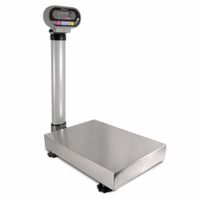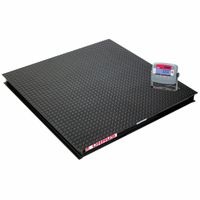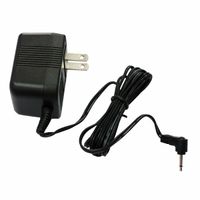Call +(254) 703 030 000 / 751 483 999 / 721 704 777
- Home
- Packaging Shipping
- Shipping Mailroom Scales
.....Read More
Frequently Asked Questions
1. What are the best shipping scales for accuracy?
1. **Accuteck ShipPro W-8580**: Known for its precision, the Accuteck ShipPro W-8580 offers a capacity of up to 110 lbs with a sensitivity of 0.1 oz. It features a large backlit LCD display and a tare function, making it ideal for both small and large packages.
2. **Weighmax W-2809**: This scale provides a capacity of 90 lbs and a sensitivity of 0.1 oz. It is equipped with a large LCD screen and a tare function, ensuring accurate measurements. Its durability and reliability make it a popular choice for home and small business use.
3. **Smart Weigh Digital Heavy Duty Shipping and Postal Scale**: With a capacity of 440 lbs and a precision of 0.05 lbs, this scale is suitable for heavy-duty shipping needs. It features a large platform and an extendable cord for easy reading of the display.
4. **DYMO Digital Postal Scale**: Offering a capacity of 25 lbs and a precision of 0.1 oz, the DYMO scale is compact and portable. It includes a hold feature to lock weight readings and a tare function, making it perfect for small packages and letters.
5. **American Weigh Scales PS-25**: This scale has a capacity of 55 lbs and a precision of 0.01 lbs. It is compact, with a backlit LCD display and a tare function, making it suitable for both home and office use.
6. **MUNBYN Shipping Scale**: With a capacity of 66 lbs and a precision of 0.1 oz, the MUNBYN scale is designed for efficiency and accuracy. It features a large platform, a backlit display, and a tare function, making it ideal for e-commerce businesses.
These scales are renowned for their accuracy, reliability, and user-friendly features, catering to various shipping needs.
2. How do I calibrate a mailroom scale?
1. **Read the Manual**: Start by consulting the user manual for specific calibration instructions and requirements for your model.
2. **Warm-Up**: Turn on the scale and let it warm up for about 15-30 minutes to ensure accurate readings.
3. **Level the Scale**: Ensure the scale is on a flat, stable surface. Use the built-in leveling bubble or an external level to adjust the feet until the scale is perfectly level.
4. **Access Calibration Mode**: Enter the calibration mode. This usually involves pressing a combination of buttons, such as "Cal" or "Mode," as specified in the manual.
5. **Select Calibration Weight**: Choose a known calibration weight. The weight should be appropriate for the scale's capacity, often 50% to 100% of the maximum capacity.
6. **Place Calibration Weight**: Once prompted, place the calibration weight on the center of the scale platform.
7. **Adjust Calibration**: The scale will display a reading. Adjust the scale to match the known weight if necessary, following the manual's instructions.
8. **Confirm Calibration**: Save the calibration settings by pressing the appropriate button, often "Enter" or "Cal."
9. **Remove Weight**: Take the calibration weight off the scale and allow it to return to zero.
10. **Verify Accuracy**: Test the scale with different known weights to ensure accuracy across its range.
11. **Regular Maintenance**: Regularly clean the scale and recalibrate periodically or as needed to maintain accuracy.
12. **Professional Calibration**: For high-precision needs, consider professional calibration services.
13. **Record Keeping**: Document the calibration process, including date, weights used, and any adjustments made, for future reference.
3. Can shipping scales measure both weight and dimensions?
No, traditional shipping scales are primarily designed to measure weight, not dimensions. They are equipped with a platform and a digital or analog display to provide the weight of the item placed on them. However, some advanced shipping scales, often referred to as dimensional weight scales or dimensioning systems, can measure both weight and dimensions. These systems use additional sensors or laser technology to capture the length, width, and height of a package.
Dimensional weight scales are particularly useful in logistics and shipping industries where dimensional weight pricing is applied. This pricing model considers both the size and weight of a package to determine shipping costs, encouraging efficient packaging. These systems can automatically calculate the dimensional weight by using the formula: (Length x Width x Height) / Dimensional Factor, where the dimensional factor is set by the carrier.
While dimensional weight scales offer comprehensive measurement capabilities, they are typically more expensive and complex than standard shipping scales. They are often used in high-volume shipping environments where efficiency and accuracy are critical. For businesses that do not require dimensional measurements, a standard shipping scale is usually sufficient.
In summary, while traditional shipping scales measure only weight, advanced systems can measure both weight and dimensions, providing a more complete solution for shipping and logistics needs.
4. What is the difference between bench scales and floor scales?
Bench scales and floor scales are both types of weighing equipment, but they differ in design, capacity, and application.
Bench scales are compact and designed to be placed on a table or bench. They are typically used for weighing smaller items and have a lower capacity, usually ranging from a few grams to several hundred kilograms. Bench scales are ideal for environments where space is limited, such as laboratories, kitchens, and retail settings. They often come with features like digital displays, tare functions, and connectivity options for data transfer. Their precision and ease of use make them suitable for tasks requiring accurate measurements, such as portion control, packaging, and quality control.
Floor scales, on the other hand, are larger and designed to be placed on the ground. They are built to handle heavier loads, with capacities ranging from several hundred kilograms to several tons. Floor scales are commonly used in industrial and commercial settings, such as warehouses, factories, and shipping facilities. They are robust and durable, often featuring a platform that can accommodate large or bulky items. Floor scales may include features like ramps for easy loading, remote displays, and compatibility with forklifts or pallet jacks. They are essential for applications involving bulk weighing, freight management, and inventory control.
In summary, the primary differences between bench scales and floor scales lie in their size, capacity, and intended use. Bench scales are suited for smaller, precise measurements, while floor scales are designed for heavy-duty weighing tasks.
5. How do dimensioners work for irregular-shaped packages?
Dimensioners for irregular-shaped packages use advanced technologies to accurately measure the dimensions of items that do not conform to standard shapes. These systems typically employ a combination of 3D imaging, laser scanning, and computer vision to capture the precise contours and dimensions of an object.
1. **3D Imaging and Laser Scanning**: Dimensioners use 3D cameras and laser scanners to create a digital model of the package. The equipment emits laser beams or light patterns that bounce off the package's surface. Sensors then capture the reflected light to determine the distance and shape of the object.
2. **Computer Vision**: Advanced algorithms process the captured data to identify the package's boundaries and calculate its dimensions. This involves analyzing the 3D model to determine the length, width, and height, even if the package has curves, protrusions, or indentations.
3. **Data Processing**: The system processes the data in real-time, often integrating with warehouse management systems to update inventory records and shipping information. This ensures that the correct dimensions are used for logistics and billing purposes.
4. **Accuracy and Calibration**: Dimensioners are calibrated to ensure high accuracy, often within a few millimeters. Regular calibration and maintenance are essential to maintain precision, especially when dealing with irregular shapes.
5. **Integration with Other Systems**: These devices often integrate with conveyor systems and automated sortation equipment, allowing for seamless processing of packages in high-volume environments.
6. **Benefits**: Using dimensioners for irregular packages improves efficiency, reduces manual measurement errors, and optimizes space utilization in storage and transportation. It also ensures accurate shipping costs based on dimensional weight.
Overall, dimensioners provide a sophisticated solution for handling the complexities of measuring irregular-shaped packages, enhancing operational efficiency in logistics and supply chain management.
6. What features should I look for in a shipping scale?
When selecting a shipping scale, consider the following features:
1. **Capacity and Accuracy**: Choose a scale with a capacity that suits your shipping needs, whether it's small parcels or large freight. Ensure it provides accurate readings, typically within 0.1 to 0.5 ounces for smaller items and up to 1 pound for larger ones.
2. **Platform Size**: The platform should be large enough to accommodate the typical size of your packages. A larger platform is beneficial for weighing bulky items.
3. **Durability and Build Quality**: Opt for a scale made from robust materials like stainless steel or heavy-duty plastic to withstand frequent use and potential impacts.
4. **Display and Readability**: A clear, backlit digital display is essential for easy reading, especially in dimly lit areas. Some scales offer detachable displays for better visibility.
5. **Units of Measurement**: Ensure the scale can measure in various units (pounds, ounces, kilograms, grams) to suit different shipping requirements.
6. **Tare Function**: This feature allows you to subtract the weight of containers or packaging, providing the net weight of the contents.
7. **Connectivity**: Scales with USB or Bluetooth connectivity can integrate with shipping software, streamlining the process of recording weights and generating labels.
8. **Portability**: If you need to move the scale frequently, consider its weight and whether it has a handle or is compact enough for easy transport.
9. **Power Source**: Check if the scale is battery-operated, AC-powered, or both. Battery-operated scales offer portability, while AC power ensures consistent operation.
10. **Auto-Off Function**: This feature helps conserve battery life by turning off the scale after a period of inactivity.
11. **Price and Warranty**: Balance your budget with the features you need. A warranty can provide peace of mind regarding the scale's longevity and reliability.
7. How do I choose the right scale for my packaging needs?
1. **Understand Your Product**: Consider the size, weight, and fragility of your product. This will help determine the scale's capacity and precision.
2. **Determine Volume**: Assess the volume of products you need to weigh. High-volume operations may require scales with faster processing times and larger platforms.
3. **Consider Accuracy**: Decide on the level of accuracy required. For high-value or sensitive products, precision is crucial.
4. **Environment**: Evaluate the environment where the scale will be used. Industrial settings may need durable, waterproof, or dustproof scales.
5. **Compliance and Standards**: Ensure the scale meets industry standards and regulations, especially if used for trade or in regulated industries.
6. **Integration Needs**: Consider if the scale needs to integrate with other systems, such as inventory management or shipping software.
7. **Budget**: Determine your budget, balancing cost with the features and durability required.
8. **Ease of Use**: Look for user-friendly interfaces and features that simplify operation and maintenance.
9. **Brand and Support**: Choose reputable brands known for quality and customer support.
10. **Future Needs**: Consider potential future changes in your packaging needs to ensure scalability.
11. **Trial and Feedback**: If possible, trial different scales and gather feedback from users to make an informed decision.
8. Are digital scales more accurate than analog scales for shipping?
Digital scales are generally more accurate than analog scales for shipping purposes. Digital scales use electronic sensors to measure weight, providing precise and consistent readings. They often have higher resolution, allowing for measurements in smaller increments, which is crucial for shipping where even slight weight differences can affect costs. Digital scales also typically offer features like tare functions, unit conversions, and memory storage, enhancing their utility and accuracy in shipping operations.
Analog scales, on the other hand, rely on mechanical components such as springs or levers, which can wear out over time, leading to less accurate readings. They are also more susceptible to environmental factors like temperature and humidity, which can affect their precision. Analog scales usually have a lower resolution, making it difficult to measure small weight changes accurately.
In shipping, where accuracy is paramount to ensure correct postage and avoid overcharging or undercharging, digital scales provide a more reliable solution. They are less prone to human error, as they display exact numbers rather than requiring the user to interpret a dial. Additionally, digital scales can often be calibrated more easily than analog scales, ensuring ongoing accuracy.
While digital scales are generally more accurate, it is important to choose a high-quality model and regularly calibrate it to maintain precision. In summary, for shipping purposes, digital scales offer superior accuracy, reliability, and functionality compared to analog scales.
9. How often should shipping scales be serviced or calibrated?
Shipping scales should be serviced or calibrated at least once a year to ensure accuracy and reliability. However, the frequency can vary based on several factors:
1. **Usage Frequency**: Scales used daily or for high-volume operations may require more frequent calibration, possibly every three to six months.
2. **Regulatory Requirements**: Some industries have specific regulations that dictate calibration frequency. It's essential to comply with these standards to avoid legal issues.
3. **Manufacturer's Recommendations**: Always follow the manufacturer's guidelines for servicing and calibration, as they are tailored to the specific model and its components.
4. **Environmental Conditions**: Scales used in harsh environments, such as those with high humidity, dust, or temperature fluctuations, may need more frequent checks.
5. **Precision Needs**: If your operations require high precision, more frequent calibration is advisable to maintain accuracy.
6. **Signs of Inaccuracy**: If you notice discrepancies in weight measurements or if the scale has been moved or jarred, it should be calibrated immediately.
7. **Type of Scale**: Different types of scales (e.g., digital vs. mechanical) may have different calibration needs.
Regular calibration ensures that scales provide accurate measurements, which is crucial for maintaining customer trust, meeting regulatory standards, and avoiding financial losses due to incorrect shipping weights.
10. What is the maximum weight capacity for most mailroom scales?
The maximum weight capacity for most mailroom scales typically ranges from 50 to 250 pounds (approximately 23 to 113 kilograms). These scales are designed to accommodate a variety of packages and parcels that are commonly processed in mailrooms, ensuring efficient handling and accurate measurement for shipping and logistics purposes. The specific capacity required can vary depending on the volume and type of items being processed in a particular mailroom. For smaller operations, a scale with a lower capacity might suffice, while larger operations or those dealing with heavier packages might require scales with higher weight limits.



